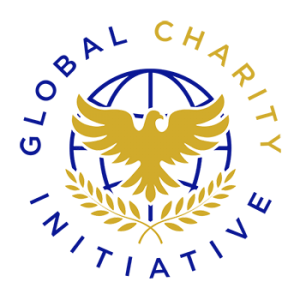Innovative Approaches to Improve Your Medical Credentialing Services
Clinical staff administration experts are on the front line of patient safety. However, their work regularly requires moving away loaded with failures and digressions. Medical credentialing services can take three to four months without much of an extent.
In some cases, considerably more, says Jill Schwitters, President of Cielo Healthcare, gives enrollment reminders to administrations. Ordinarily, the suppliers need suggestions to sum up, the essential documentation needed for the credentialing services. It tends to control the supplier, who regularly works in a busy practice or finishing residency or community preparation.
The innovative approaches are necessary to improve medical credentialing services, and make them more expeditious and active. In this blog, we are going to guide you that how medical credentialing services can be improved and what initiatives we can take to expedite the overall process in a swift and rapid way. So, let’s begin.
Here are five stages you can take to improve the Medical credentialing services.
Endure a Strategy of Standardization
Medical credentialing services can feel like a chance, in the nick of time measure. Medical services associations need accreditations straightaway. Credentialing offices may delay a few attempts to exterminate fire somewhere else, at that point, fall behind on what they were working on.
Standardization is the key, says Marshall Baker. He works as a Business Consultant for doctors and is an Educator with the Accreditation Association for Ambulatory Health Care. Standardizing the credentialing cycle for the expert staff and different suppliers can get everybody in total agreement and reduce mistakes.
One approach to do this is, to begin with, normalized center advantages for every claim to the character’s extent of training to improve on setting up what every supplier can perform.
Embrace Technology
Some clinical staff administration divisions depend on paper documents to monitor licenses and accreditations. Yet, those paper frameworks are out-of-date and can bring hazards into the framework. Advances in innovation have made it understandable to catch and store the data required for credentialing effortlessly.
Automatic process, record-keeping and setting up notifications when licenses and confirmations are close to terminating are good to record. Moreover, collecting simple-to-follow agendas for various positions or divisions.
Strengthen Your Approach
Systems with various areas regularly make things hard on themselves. By requiring an alternate clinical staff application for every office, the supplier will be working at. Medical credentialing services procedures can make a similar progress a few times by requesting similar data or checking with similar sources.
Tech machines can decrease a portion of these issues. However, inner changes may require more effort. While a few advantages will, in any case, require load-up or CMO support, a robust methodology that requires only one application can save time and exertion.
Although this will take much time in changing administration system. Like negotiating with doctors, changing standing rules and many years of training, over the long run will be additional time productive.
Work together with Other Teams
Medical care associations are frequently partitioned into storehouses, making it hard for various offices to cooperate. IT is a genuine model; each office utilizes IT administrations, yet offices tend not to connect with IT except for an issue or update. Improving the credentialing cycle will mean divisions that don’t frequently cooperate — like IT and tasks — should agree on different processes.
Individuals who don’t understand the services may attempt to make changes that aren’t useful, so communication is necessary. The individuals who are not straightforwardly dealing with the process might be ignorant and doubt their credentialing partners. Office pioneers should focus and run after assigned goals.
Stay Current
Individuals from credentialing and medical staff administrations offices should search for doors to stay up with the latest. Engaging in expert affiliations like the National Association Medical Staff Services (NAMSS), organizing with friends, and analyzing fresh from associations like the Center for Affordable Quality Healthcare (CAQH) will help them stay current on current methods in the business.
Suppliers who stay current with CAQH don’t have as much trouble with the credentialing services any longer. The only test that remains is to stay up with the latest and to organize them properly. Use your innovation to set updates and inspires to guarantee uniformity.
The Demand for Electronic Credentialing
Medical blunders are liable for the passing of 98,000 Americans every year. All around, this measurement incites industry immigrants to battle for improved principles of competency. Yet associations keep utilizing easy, standard, and paper-based credentialing actions that won’t ever genuinely ensure conventional suppliers’ accreditations.
With one honest human blunder in taking care of the current paper mess, documentation is necessary. A medical attendant can be approved to perform administrations past his experience. A doctor with a terminated permit can be permitted to keep on practicing. This can have genuine negative entanglements to patient safety, a doctor’s proficient endurance, and a partnered foundation’s position. Fortunately, human error and developing administrative change has set authorized significance upon medical services associations.
To put resources into medical credentialing services that grows access and meets benchmarks for improving the nature of care while lessening significant expenses.
Conclusion
Credentialing can be a migraine for wellbeing frameworks and centers of any size. Yet, by normalizing it using innovation and keeping awake-to-date on accepted procedures. Credentialing offices will decrease faults and improve the process no matter how you look at it. Medical clinics and other medical care associations have generally seen credentialing as a registration box administrative weight.
They have to be a great extent, ignored the advantages of a smoothed-out approach. Without a knowledge of the money-saving advantages, hazard controlling. General productivity of an electronic credentialing framework, it’s no big surprise that most medical care associations check certifications at the hour of recruit and afterwards once every few years.
More consistent checking is neglected due to the time and cost of physically approving worker records against different essential sources. As a rule, manual information obtaining and confirmation on a single supplier can take anyplace from a few days to a while to finish.



